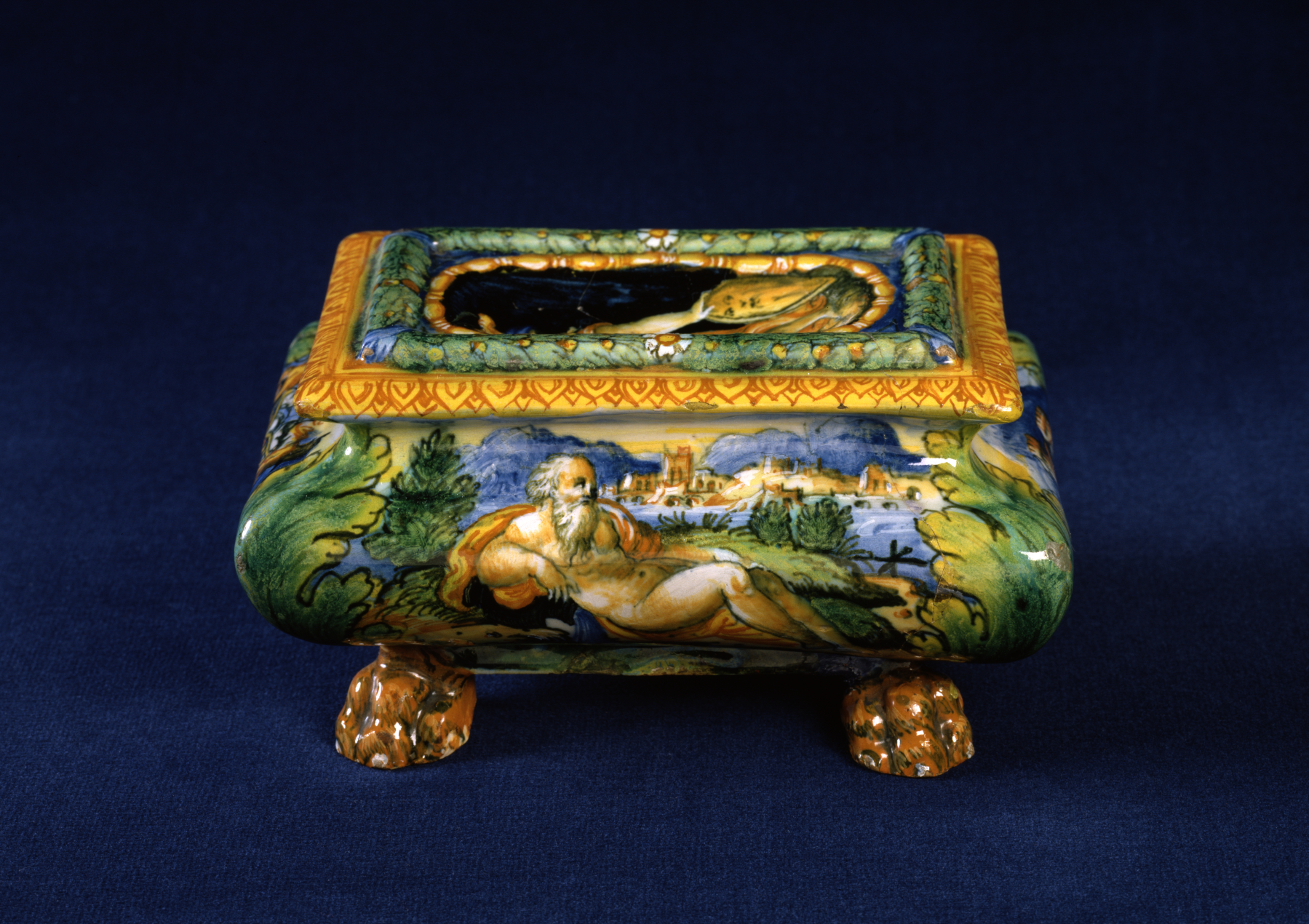Salt Cellar with a River God
(Renaissance Europe )
A salt cellar or dish for salt was often a matching component of a large set of decorated tableware, including plates and bowls, as well as basins and candlesticks. They were intended to add to the festive appearance of the table and could be quite elaborate. On the long sides of this salt cellar, river gods recline against a lush landscape. These gods may allude to the element of water and likewise to the sea as the source of salt. On the cellar’s short sides, an unidentified coat of arms is surmounted by three turtles and the Greek motto “BPAΔΥΤΗΣ” (slowness), perhaps to convey the notion of the wisdom of carrying out plans step by step, presumably an approach associated with the owner. At the center, the concave receptacle includes an image of the goddess of wisdom Minerva with a shield and helmet. The receptacle is surrounded by a bead and reel frame, and a laurel wreath, the latter a traditional symbol of virtuous victory. The underside of the salt cellar is glazed white.
This salt cellar was produced in the workshop of Guido Durantino, a principal figure in Urbino’s thriving ceramic industry. To see more maiolica wares produced by Guido’s workshop, click on the name in the creator field; for another salt cellar, see 48.1361; for ‘maiolica’ in general, see 48.1366.
Provenance
Provenance (from the French provenir, 'to come from/forth') is the chronology of the ownership, custody, or location of a historical object. Learn more about provenance at the Walters.
William Beckford, London, 1844 [mode of acquisition unknown]; Hamilton Palace [date and mode of acquisition unknown] [no. 817]; J. E. Taylor [date of acquisition unknown], by purchase [no. 246]; Henry Walters, Baltimore [date and mode of acquisition unknown]; Walters Art Museum, 1931, by bequest.
Exhibitions
| 2001-2002 | William Beckford, 1760-1844: An Eye for the Magnificent. The Bard Graduate Center, New York; Dulwich Picture Gallery, London. |
Conservation
| Date | Description | Narrative |
|---|---|---|
| 7/5/1961 | Treatment | repaired; loss compensation; coated |
Geographies
Italy, Urbino (Place of Origin)
Measurements
3 1/16 x 5 11/16 in. (7.7 x 14.5 cm)
Credit Line
Acquired by Henry Walters
Location in Museum
Accession Number
In libraries, galleries, museums, and archives, an accession number is a unique identifier assigned to each object in the collection.
In libraries, galleries, museums, and archives, an accession number is a unique identifier assigned to each object in the collection.
48.1338




